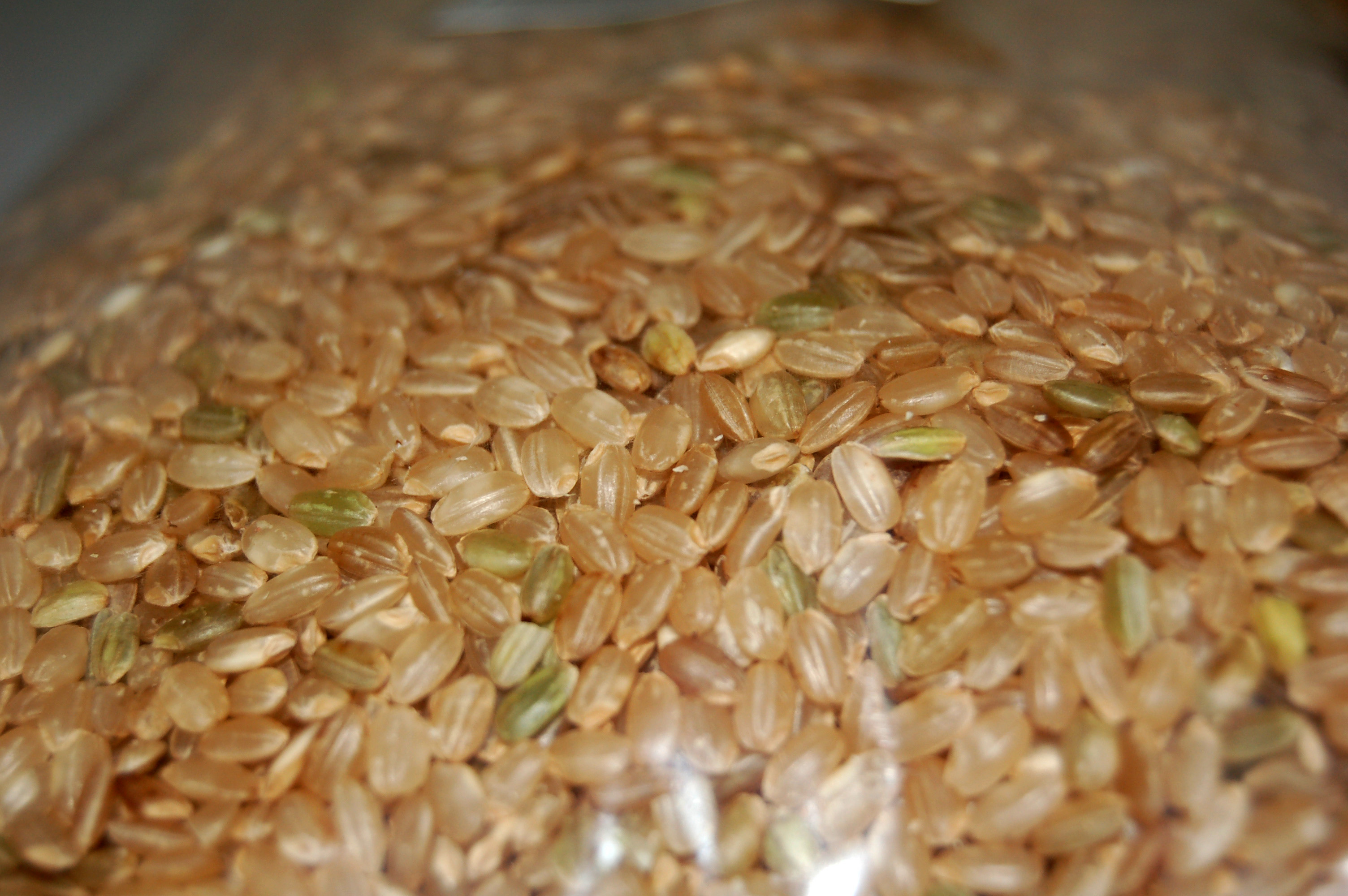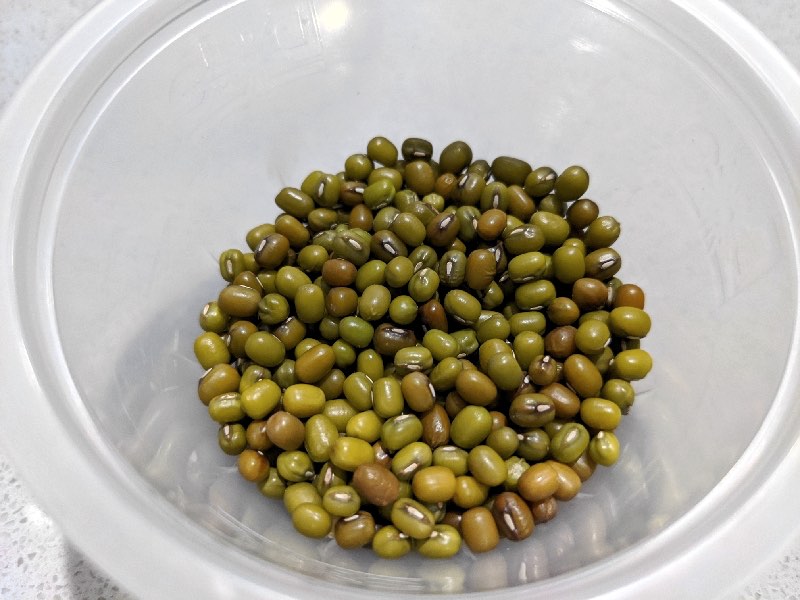Brown Rice vs. Mung Bean
Nutrition comparison of Cooked Brown Rice and Mung Bean
Ever wonder how your favorite foods stack up against each other in terms of nutrition?
We compared the nutritional contents of
cooked
brown rice
versus
mung bean
(100g each)
below using 2020 USDA and NIH data[1].
For a quick recap of significant nutrients and differences in brown rice and mung bean:
- Both brown rice and mung bean are high in calories.
- Brown rice has 26.5 times less sugar than mung bean.
- Mung bean has more thiamin, riboflavin, pantothenic acid, Vitamin B6 and folate.
- Mung bean is an excellent source of calcium, dietary fiber, iron, potassium and protein.
USDA sources for nutritional information: Brown Rice (Rice, brown, long-grain, cooked (Includes foods for USDA's Food Distribution Program)) and Mung Bean (Mung beans, mature seeds, raw) . Have a correction or suggestions? Shoot us an email.
Calories and Carbs
calories
Both brown rice and mung bean are high in calories. Mung bean has 182% more calories than brown rice - brown rice has 123 calories per 100 grams and mung bean has 347 calories.
For macronutrient ratios, brown rice is lighter in protein, heavier in carbs and heavier in fat compared to mung bean per calorie. Brown rice has a macronutrient ratio of 9:84:7 and for mung bean, 27:70:3 for protein, carbohydrates and fat from calories.
Macro Ratios from Calories:
| Brown Rice | Mung Bean | |
|---|---|---|
| Protein | 9% | 27% |
| Carbohydrates | 84% | 70% |
| Fat | 7% | 3% |
| Alcohol | ~ | ~ |
carbohydrates
Mung bean is high in carbohydrates and brown rice has 59% less carbohydrates than mung bean - brown rice has 25.6g of total carbs per 100 grams and mung bean has 62.6g of carbohydrates.
dietary fiber
Mung bean is an excellent source of dietary fiber and it has 919% more dietary fiber than brown rice - brown rice has 1.6g of dietary fiber per 100 grams and mung bean has 16.3g of dietary fiber.
sugar
Brown rice has 26.5 times less sugar than mung bean - brown rice has 0.24g of sugar per 100 grams and mung bean has 6.6g of sugar.
Protein
protein
Mung bean is an excellent source of protein and it has 771% more protein than brown rice - brown rice has 2.7g of protein per 100 grams and mung bean has 23.9g of protein.
Fat
saturated fat
Both brown rice and mung bean are low in saturated fat - brown rice has 0.26g of saturated fat per 100 grams and mung bean has 0.35g of saturated fat.
Vitamins
Vitamin C
Mung bean has more Vitamin C than brown rice - mung bean has 4.8mg of Vitamin C per 100 grams and brown rice does not contain significant amounts.
Vitamin A
Mung bean has more Vitamin A than brown rice - mung bean has 6ug of Vitamin A per 100 grams and brown rice does not contain significant amounts.
Vitamin E
Brown rice and mung bean contain similar amounts of Vitamin E - brown rice has 0.17mg of Vitamin E per 100 grams and mung bean has 0.51mg of Vitamin E.
Vitamin K
Brown rice and mung bean contain similar amounts of Vitamin K - brown rice has 0.2ug of Vitamin K per 100 grams and mung bean has 9ug of Vitamin K.
The B Vitamins
Mung bean has more thiamin, riboflavin, pantothenic acid, Vitamin B6 and folate. Both brown rice and mung bean contain significant amounts of niacin.
| Brown Rice | Mung Bean | |
|---|---|---|
| Thiamin | 0.178 MG | 0.621 MG |
| Riboflavin | 0.069 MG | 0.233 MG |
| Niacin | 2.561 MG | 2.251 MG |
| Pantothenic acid | 0.38 MG | 1.91 MG |
| Vitamin B6 | 0.123 MG | 0.382 MG |
| Folate | 9 UG | 625 UG |
Minerals
calcium
Mung bean is an excellent source of calcium and it has 43 times more calcium than brown rice - brown rice has 3mg of calcium per 100 grams and mung bean has 132mg of calcium.
iron
Mung bean is an excellent source of iron and it has 11 times more iron than brown rice - brown rice has 0.56mg of iron per 100 grams and mung bean has 6.7mg of iron.
potassium
Mung bean is an excellent source of potassium and it has 13 times more potassium than brown rice - brown rice has 86mg of potassium per 100 grams and mung bean has 1246mg of potassium.
Omega-3 and Omega-6
omega 3s
For omega-3 fatty acids, mung bean has more alpha linoleic acid (ALA) than brown rice per 100 grams.
| Brown Rice | Mung Bean | |
|---|---|---|
| alpha linoleic acid | 0.011 G | 0.027 G |
| Total | 0.011 G | 0.027 G |
omega 6s
Comparing omega-6 fatty acids, both brown rice and mung bean contain significant amounts of linoleic acid.
| Brown Rice | Mung Bean | |
|---|---|---|
| other omega 6 | 0.004 G | ~ |
| linoleic acid | 0.355 G | 0.357 G |
| Total | 0.359 G | 0.357 G |
Customize your serving size
The comparison below is by common portions, e.g. cups, packages. You can also see a more concrete comparison by weight at equal weight (by grams) comparison.
Note: The specific food items compared are: Brown Rice (Rice, brown, long-grain, cooked (Includes foods for USDA's Food Distribution Program)) and Mung Bean (Mung beans, mature seeds, raw) .
Cooked Brown Rice g
()
|
Daily Values (%) |
Mung Bean g
()
|
|||||
|---|---|---|---|---|---|---|---|
| KCAL % |
|
5% | calories | 5% |
|
KCAL % | |
| G % |
|
5% | carbohydrates | 5% |
|
G % | |
| G % |
|
5% | dietary fiber | 5% |
|
G % | |
| G | 5% | sugar | 5% | G | |||
| G % |
|
5% | total fat | 5% |
|
G % | |
| G % |
|
5% | saturated fat | 5% |
|
G % | |
| G | 5% | monounsaturated fat | 5% | G | |||
| G | 5% | polyunsaturated fat | 5% | G | |||
| G | 5% | trans fat | 5% | G | |||
| MG | 5% | cholesterol | 5% | MG | |||
| MG % |
|
5% | sodium | 5% |
|
MG % | |
| 5% | Vitamins and Minerals | 5% | |||||
| UG % |
|
5% | Vitamin A | 5% |
|
UG % | |
| MG % |
|
5% | Vitamin C | 5% |
|
MG % | |
| IU % |
|
5% | Vitamin D | 5% |
|
IU % | |
| MG % |
|
5% | calcium | 5% |
|
MG % | |
| MG % |
|
5% | iron | 5% |
|
MG % | |
| MG % |
|
5% | magnesium | 5% |
|
MG % | |
| MG % |
|
5% | potassium | 5% |
|
MG % | |
| MG % |
|
5% | thiamin (Vit B1) | 5% |
|
MG % | |
| MG % |
|
5% | riboflavin (Vit B2) | 5% |
|
MG % | |
| MG % |
|
5% | niacin (Vit B3) | 5% |
|
MG % | |
| MG % |
|
5% | Vitamin B6 | 5% |
|
MG % | |
| MG % |
|
5% | pantothenic acid (Vit B5) | 5% |
|
MG % | |
| UG % |
|
5% | folate (Vit B9) | 5% |
|
UG % | |
| UG % |
|
5% | Vitamin B12 | 5% |
|
UG % | |
| MG % |
|
5% | Vitamin E | 5% |
|
MG % | |
| UG % |
|
5% | Vitamin K | 5% |
|
UG % | |
| G % |
|
5% | protein | 5% |
|
G % | |
| UG % |
|
5% | biotin (Vit B7) | 5% |
|
UG % | |
| MG % |
|
5% | choline | 5% |
|
MG % | |
| MG % |
|
5% | chlorine | 5% |
|
MG % | |
| UG % |
|
5% | chromium | 5% |
|
UG % | |
| MG % |
|
5% | copper | 5% |
|
MG % | |
| UG % |
|
5% | fluoride | 5% |
|
UG % | |
| UG % |
|
5% | iodine | 5% |
|
UG % | |
| MG % |
|
5% | manganese | 5% |
|
MG % | |
| UG % |
|
5% | molybdenum | 5% |
|
UG % | |
| MG % |
|
5% | phosphorus | 5% |
|
MG % | |
| UG % |
|
5% | selenium | 5% |
|
UG % | |
| MG % |
|
5% | zinc | 5% |
|
MG % | |
| G | 5% | Water | 5% | G | |||
| G | 5% | Starch | 5% | G | |||
| G | 5% | Alcohol | 5% | G | |||
FAQ
Does brown rice or mung bean contain more calories in 100 grams?Both brown rice and mung bean are high in calories. Mung bean has 180% more calories than brown rice - brown rice has 123 calories in 100g and mung bean has 347 calories.
Does brown rice or mung bean have more carbohydrates?
By weight, mung bean is high in carbohydrates and brown rice has 60% fewer carbohydrates than mung bean - brown rice has 25.6g of carbs for 100g and mung bean has 62.6g of carbohydrates.
Does brown rice or mung bean contain more calcium?
Mung bean is a rich source of calcium and it has 43 times more calcium than brown rice - brown rice has 3mg of calcium in 100 grams and mung bean has 132mg of calcium.
Does brown rice or mung bean contain more iron?
Mung bean is an abundant source of iron and it has 11 times more iron than brown rice - brown rice has 0.56mg of iron in 100 grams and mung bean has 6.7mg of iron.
Does brown rice or mung bean contain more potassium?
Mung bean is a rich source of potassium and it has 13 times more potassium than brown rice - brown rice has 86mg of potassium in 100 grams and mung bean has 1246mg of potassium.

